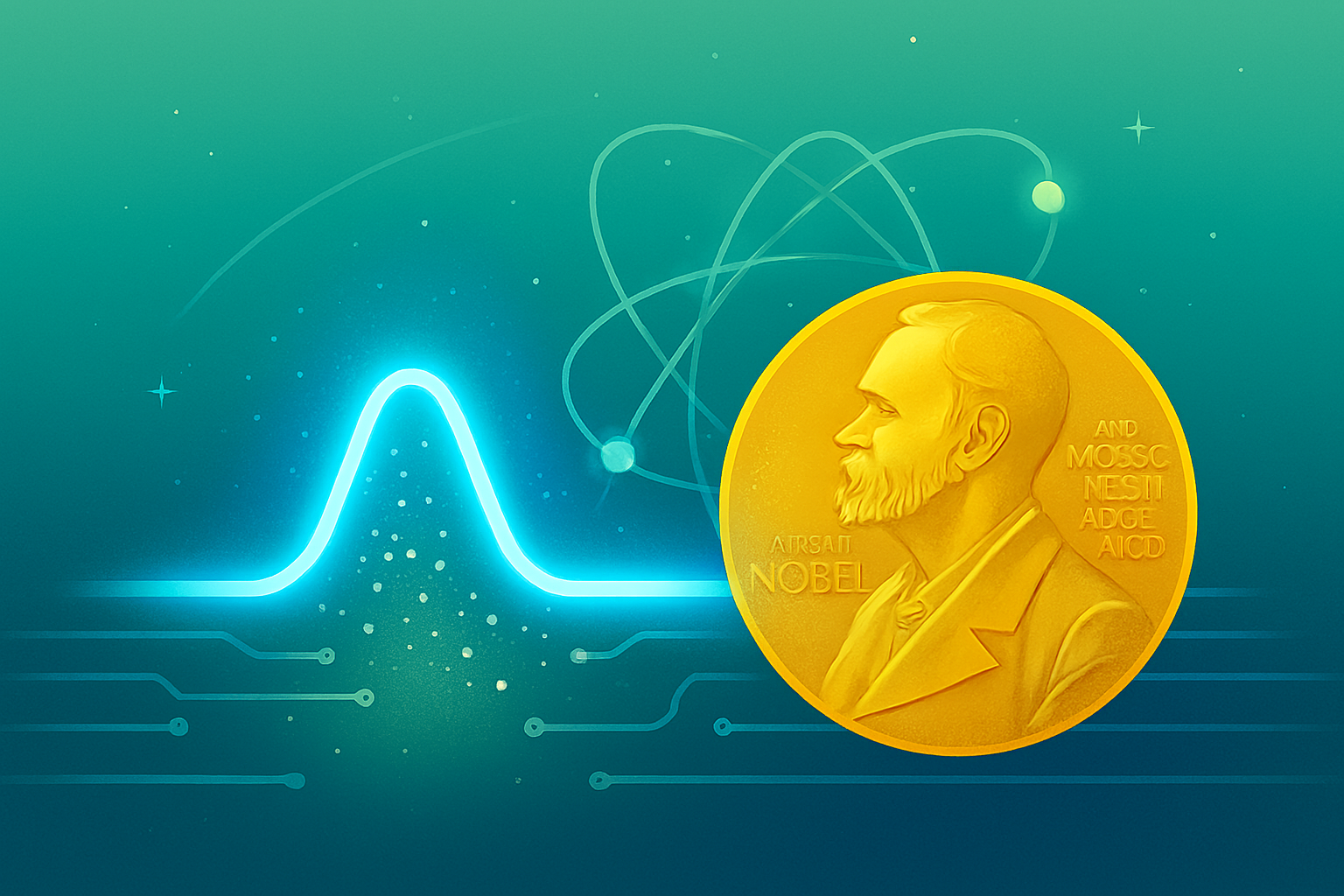An in-depth analysis of the 2025 Physics Nobel Prize awarded for macroscopic quantum tunneling. Discover how curiosity-driven research on Josephson junctions became the foundation for quantum computers and modern technology.
The 2025 Nobel Prize in Physics awarded to John Clarke, Michel Devoret, and John Martinis is more than an award for a clever experiment. It’s a powerful testament to the world-changing potential of fundamental, curiosity-driven science. A recent news article, “Radical tunnel: On the Physics Nobel 2025,” breaks down this achievement, highlighting how a question about nature’s most bizarre rules paved the way for the technological frontier we stand on today.
This analysis delves into the science, the significance, and the profound lesson behind this well-deserved Nobel.
What Did the Laureates Actually Discover?
In the 1980s, the laureates set out to answer a deceptively simple question: do the strange laws of quantum mechanics, known to govern the tiny world of atoms and particles, also apply to objects we can see?
Their laboratory was a superconducting circuit featuring a Josephson junction—two superconductors separated by an incredibly thin insulating barrier. Here’s the breakthrough in simple terms:
- The Classical View: In our everyday world, a current in this circuit would be trapped unless it had enough energy to “climb over” the insulating barrier. Think of a ball needing a push to get over a hill.
- The Quantum Reality: The team cooled the circuit to temperatures near absolute zero and witnessed something extraordinary. The current didn’t go over the barrier; it disappeared on one side and reappeared on the other as if it had dug a “tunnel.” This phenomenon, quantum tunneling, is a hallmark of the quantum world.
- The “Macroscopic” Leap: They also showed that the entire circuit, containing trillions of electrons, behaved as a single, large quantum object with distinct energy levels (quantization). This proved that quantum weirdness wasn’t confined to the subatomic scale. It could, in fact, be “big enough to hold in your hand.”
The article rightly emphasizes the team’s rigorous efforts to prove this wasn’t an experimental error, solidifying one of the most important findings in modern physics.
Why This “Radical” Discovery Matters Today
The impact of this foundational work is everywhere in today’s cutting-edge technology. The Josephson junction is the building block of the quantum age.
- The Heart of Quantum Computers: The most direct application is in superconducting qubits. These are the core processing units of leading quantum computers being developed by companies like Google and IBM. The quantum tunneling and energy states that Clarke, Devoret, and Martinis studied are precisely what allow a qubit to exist in a superposition of 0 and 1, granting quantum computers their immense potential power.
- Powering Advanced Instruments: The principles they confirmed are also vital in:
- Ultrasensitive Magnetometers used in brain imaging (MEG) and geological surveys.
- Quantum Voltage Standards that ensure precision in electrical measurements.
- Single-Photon Detectors crucial for astronomy and secure quantum communication.
The Deeper Lesson: The Value of Curiosity-Driven Science
Perhaps the most important point the article makes is not about the what, but the why. When these scientists began their experiments, no one was thinking about building a quantum computer.
They were driven by a pure desire to test the limits of quantum theory. There was no immediate commercial application or product roadmap. This Nobel Prize is a resounding endorsement of basic, fundamental research.
The article concludes that their “pursuit of a fundamental question produced the principles” that engineers and nations are now racing to capitalize on. This is a crucial lesson for policymakers and funding bodies: investing in curiosity is not a luxury; it is the seed corn for future technological and economic leadership.
The Future Challenge: Preserving Quantum Magic
The article also points to the next great challenge, which stems directly from this work. Quantum states are incredibly fragile. The focus of current research is no longer on proving they exist in large objects, but on protecting them from the environment long enough to perform useful calculations. This involves advances in materials science, better filtering techniques, and complex cryogenic systems.
Conclusion: A Prize for the Past and the Future
The 2025 Physics Nobel Prize honors a decades-old discovery whose full impact is only now being realized. It rewards:
- A Scientific Leap: Proving the quantum world extends into our macroscopic reality.
- A Technological Foundation: Providing the bedrock for the entire field of superconducting quantum engineering.
- A Philosophical Stand: Championing the indispensable role of curiosity-driven inquiry.
By celebrating John Clarke, Michel Devoret, and John Martinis, the Nobel Committee reminds us that the most “radical” ideas—like a current tunneling through an impossible barrier—are often the ones that ultimately reshape our world.
